A minor obsession with… Hermès scarves
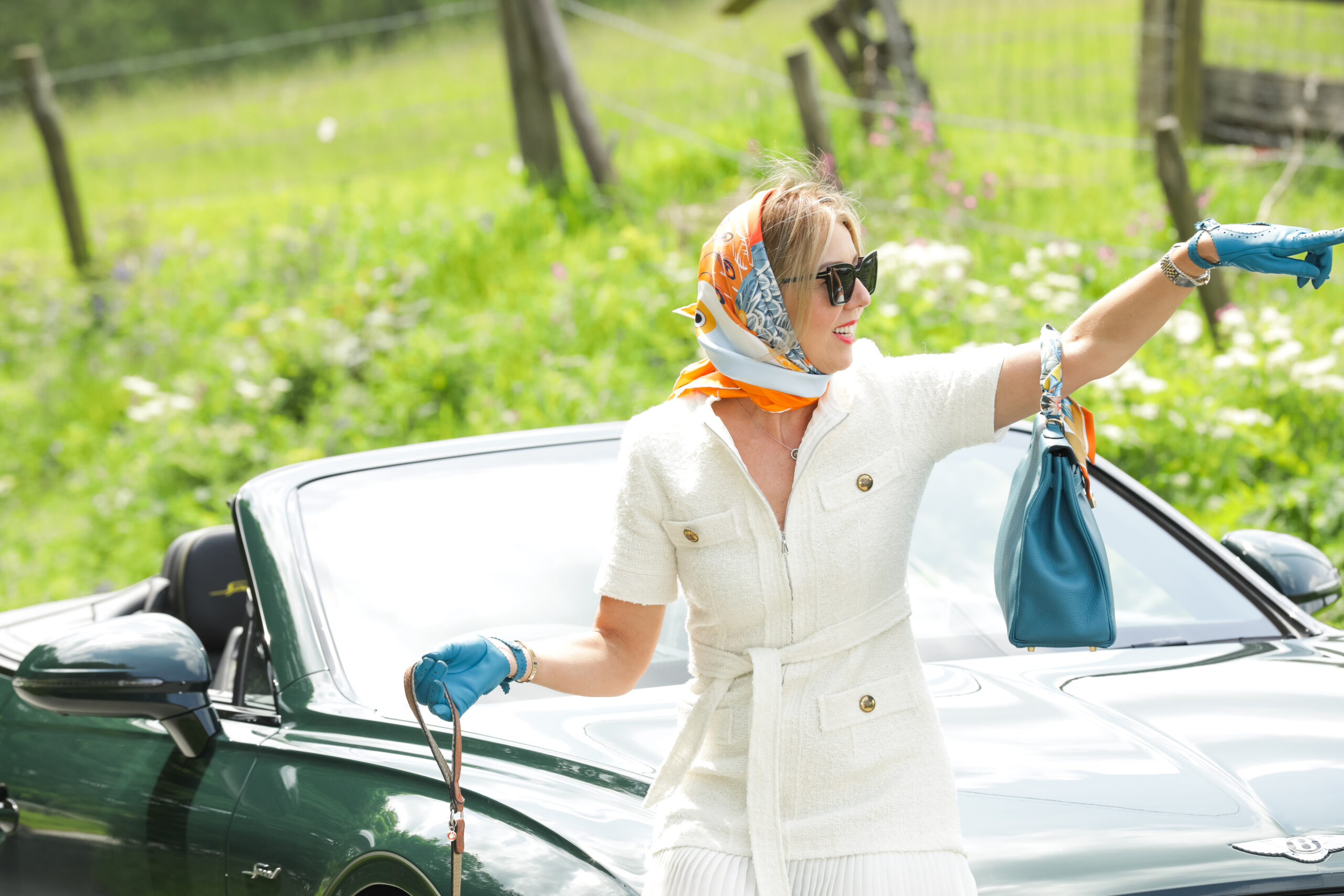
Hermès scarves hold a very special place in my heart. I look on them as far more than a statement of fashion, they’re a statement of art. I mean, have you ever looked closely at a Hermès scarf and examined the design? They’re exquisite – unbelievable detail, beautiful use of colour and always completely, unmistakably Hermès, of course.
A potted history of the Hermès scarf
Hermès was founded in 1837, when harness-maker Thierry Hermè opened his own workshop in Paris, and whose bespoke harnesses were soon all the rage with the wealthy of Paris. By 1880, the business was able to move to a large site on Faubourg Saint-Honoré, where Charles-Emile, son of Thierry, opened a store alongside the workshop, where wealthy patrons could browse leather goods and have their harnesses and saddles made bespoke.
It wasn’t until 1937, a full century after the brand, now a fully-formed fashion house catering to the elite of Europe, Russia and the USA, was formed, that they launched the first Hermès silk scarf. The first scarf, and many thereafter, was designed by Robert Dumas, son-in-law of Emile Hermès, who took over from his father Charles-Emile in the 1920s.
These were introduced alongside the growing number of women’s fashion items, first introduced in 1929.
The silk
We all know that every Hermès scarf is made from pure silk, but did you know that Hermès owns the facility where all their silk is made? They use only the most luxurious silk, created by Bombyx Mori silk worms housed in a special facility in Brazil. It takes an enormous amount of the silk filament spun by the silkworms to make a single scarf – 37km in fact for a simple standard square. The silk is weighty and luxurious and feels sleek and rich to the touch.
Three sizes of Hermès carré
The carré, or square, is the classic Hermès scarf, and comes in 70x70cm, 90x90cm and 140x140cm, with perfect 90 degree corners. There are of course occasional limited edition pieces in different sizes, and there is the gorgeous Twilly range, three sizes of narrow rectangles perfect for tying around a bag strap or neck and the Bandana, a 55cm x 55cm square.
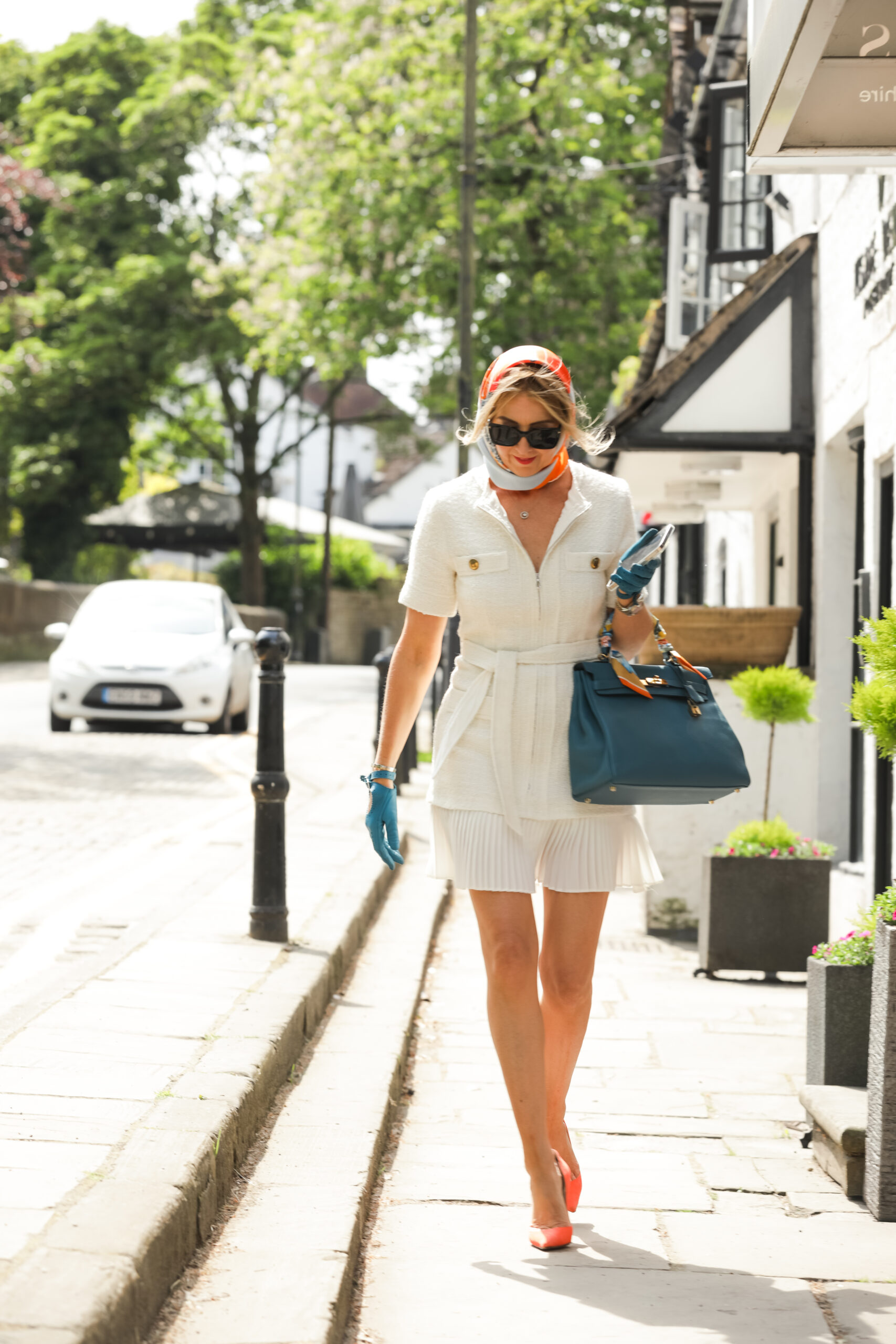
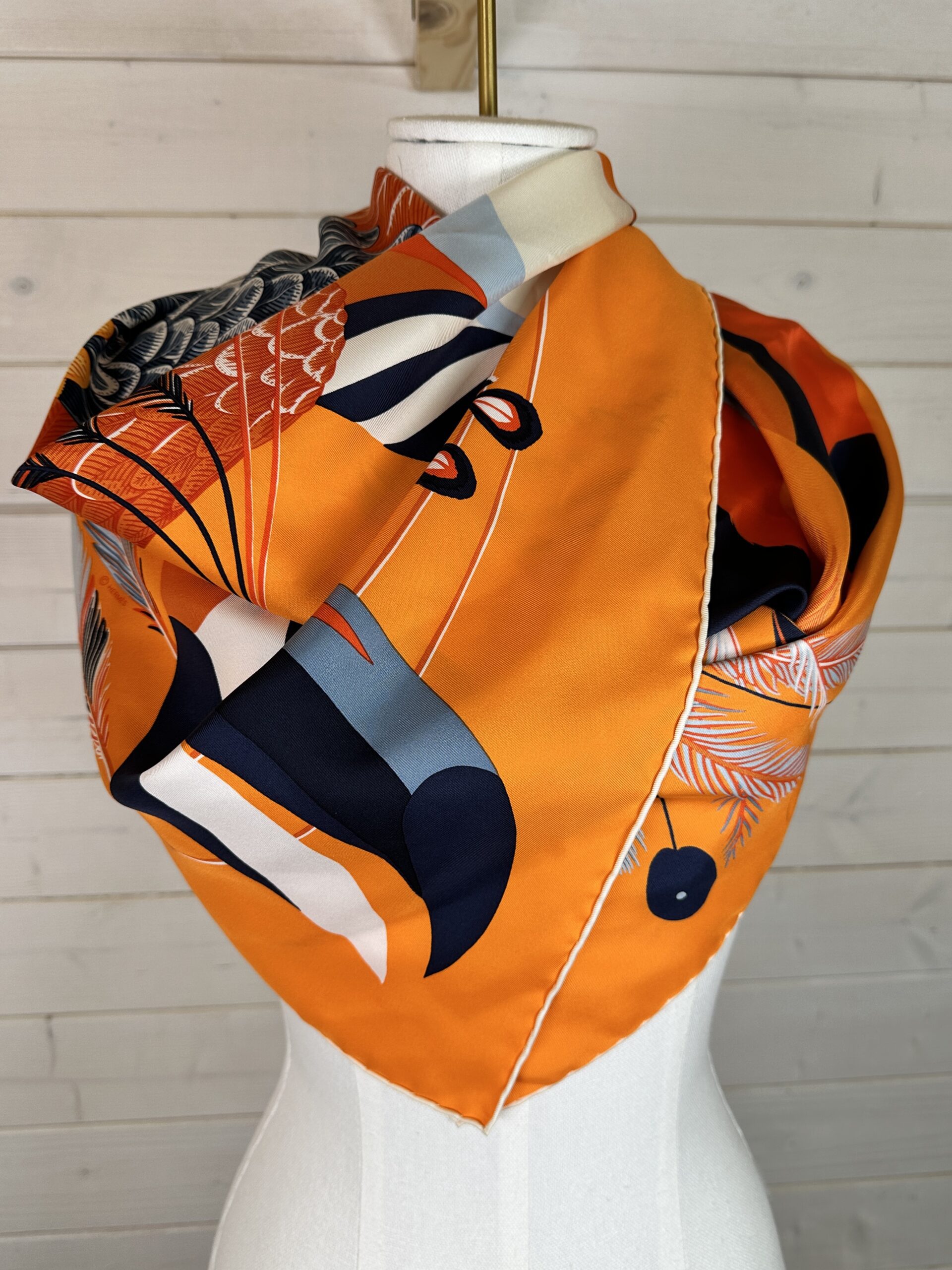
The designs
Hermès can release up to 20 new scarf designs each year, all created by freelance artists, drawn from around the globe, used to keep the designs fresh and original. It takes around 18 months to produce a scarf, from conception to print, and the designers have a colour card with 75,000 colours to choose from, with it taking six months for the colours used in any one design to be agreed. Each scarf is screen printed by hand in the Hermès studio in Lyon. The prints are taken from a hand-engraving, which takes 750 hours to complete, and the application of colour and the sliding of the screen to create each element is the art of a master craftsman.
Spotting a fake Hermès scarf
As with every sought-after, collectible item, there is a market for fake goods. And as demand grows, the fakes get harder to spot. It’s vital that we do weed out any fakes that come in to Dress, of course, as not only is it illegal to deal in fakes, even if you tell the buyer it’s a fake, it’s an insult to the heritage and incredible craftsmanship that goes into a true Hermès scarf.
So, what do we look for? For a start, we expect to see any Hermès scarf arrive in the box and packaging Hermès use when retailing their creations. If this is missing, alarm bells ring. Second – the feel of the silk is quite unmistakable, as Hermès silk is twice the weight, on average, of normal silk. The way the silk is woven also ensures the way it falls through your hands, and holds the integrity of the perfect square, with no distortion.
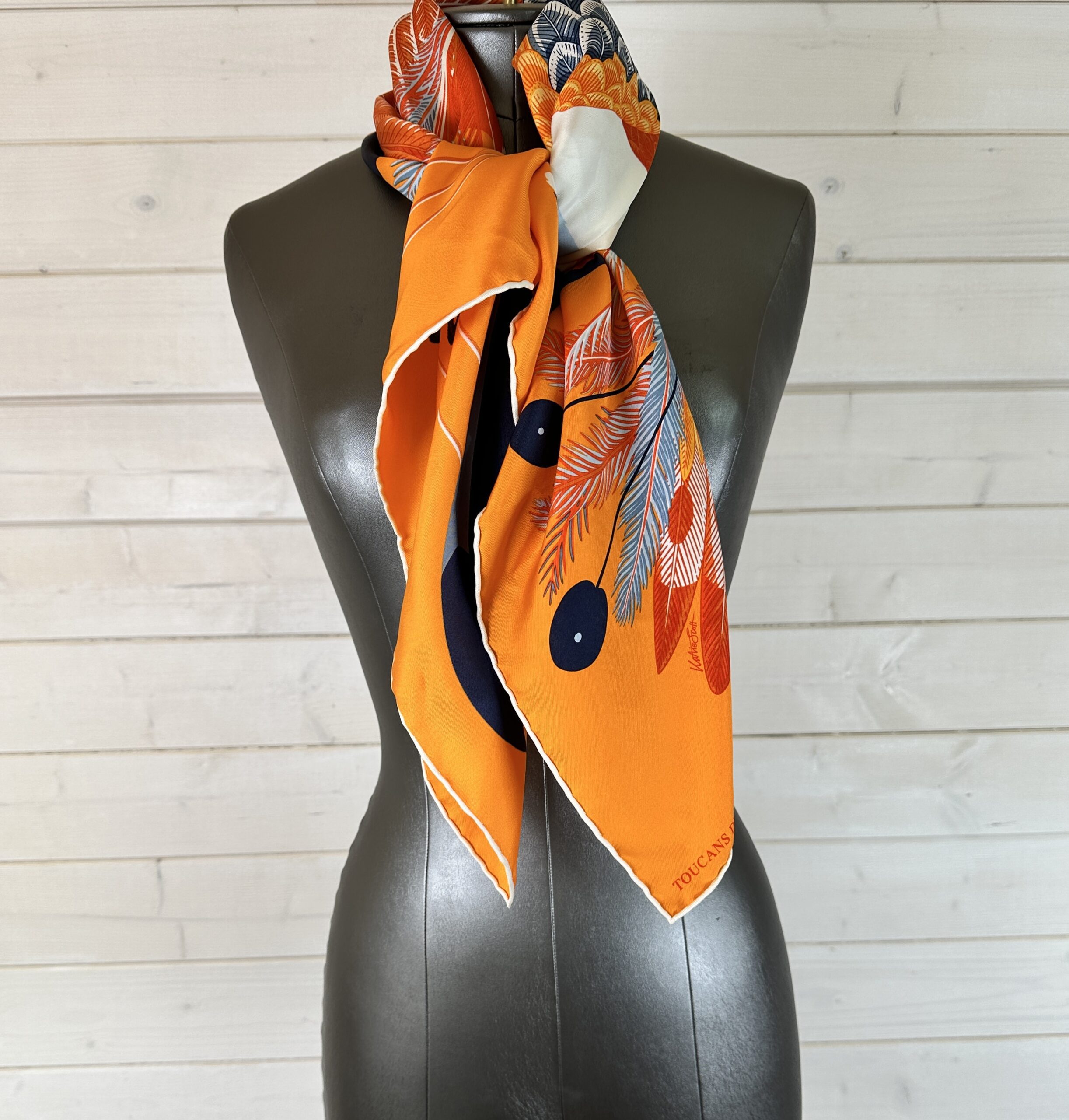
Next, we check measurements, and examine the workmanship. All Hermès scarves are hand-made, and the edges are rolled and then hand-stitched, a process far too time-consuming and expensive for makers of fakes. Hermès destroy any scarves where there has been any slippage during the screen-printing process, so you will never see any overlap of colour or absence of colour.
Hermès hand stitch a label, also made in silk, on to each of their scarves, but some owners remove this, so the absence of this label isn’t always a red flag – but if you do own a Hermès scarf and want to remove the label, keep it in the box.
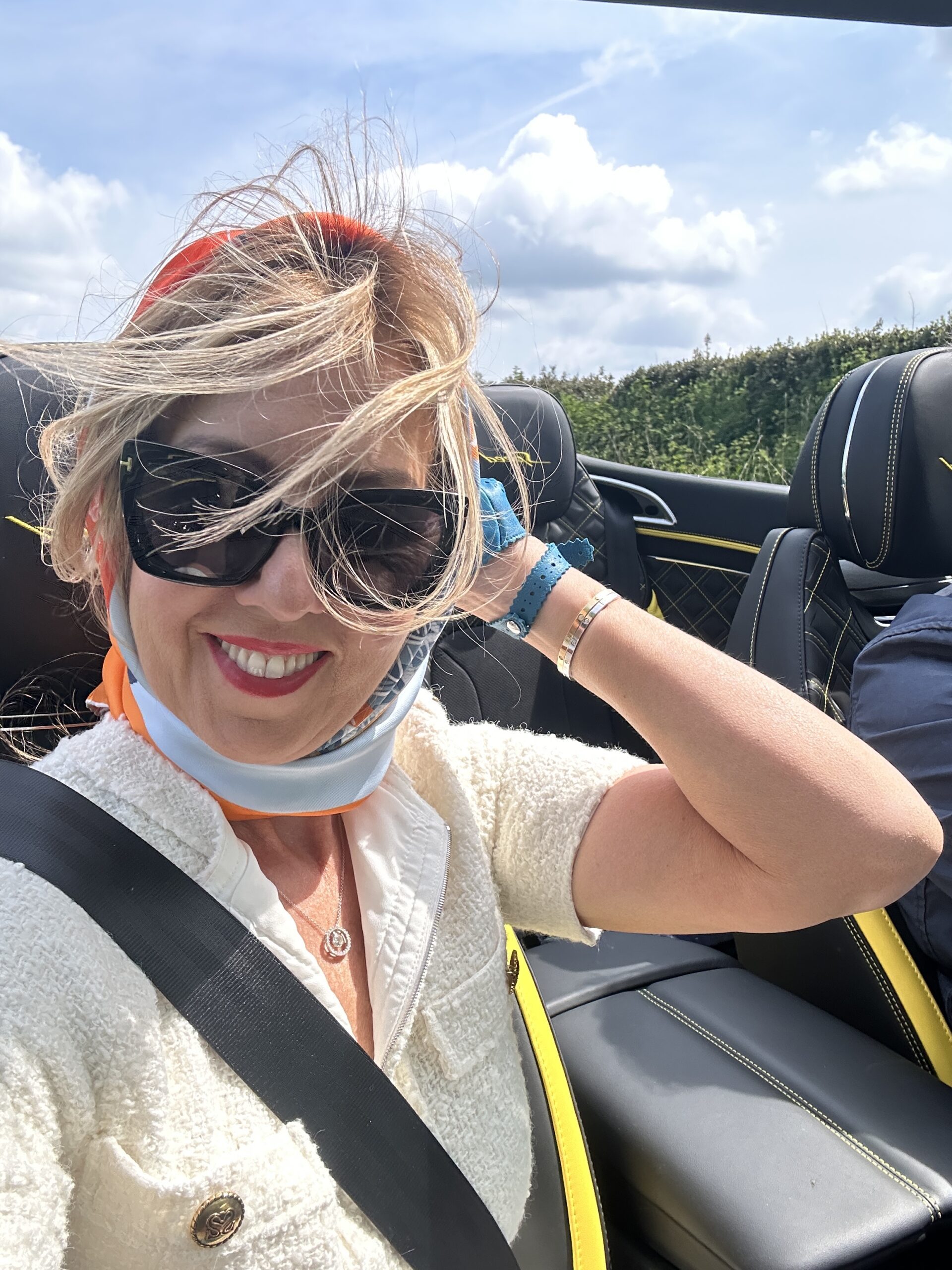
Hermès scarves are one of fashion’s most collectible items, an icon of design and craftsmanship and with them being produced in so many designs, in such an array of colours, there will always be one you will love to own and to wear. Whether as a neck scarf to brighten up any outfit, or worn as a classic headscarf to keep your hair in place when you’re in an open top car! You can even use them to accessorise your handbag.
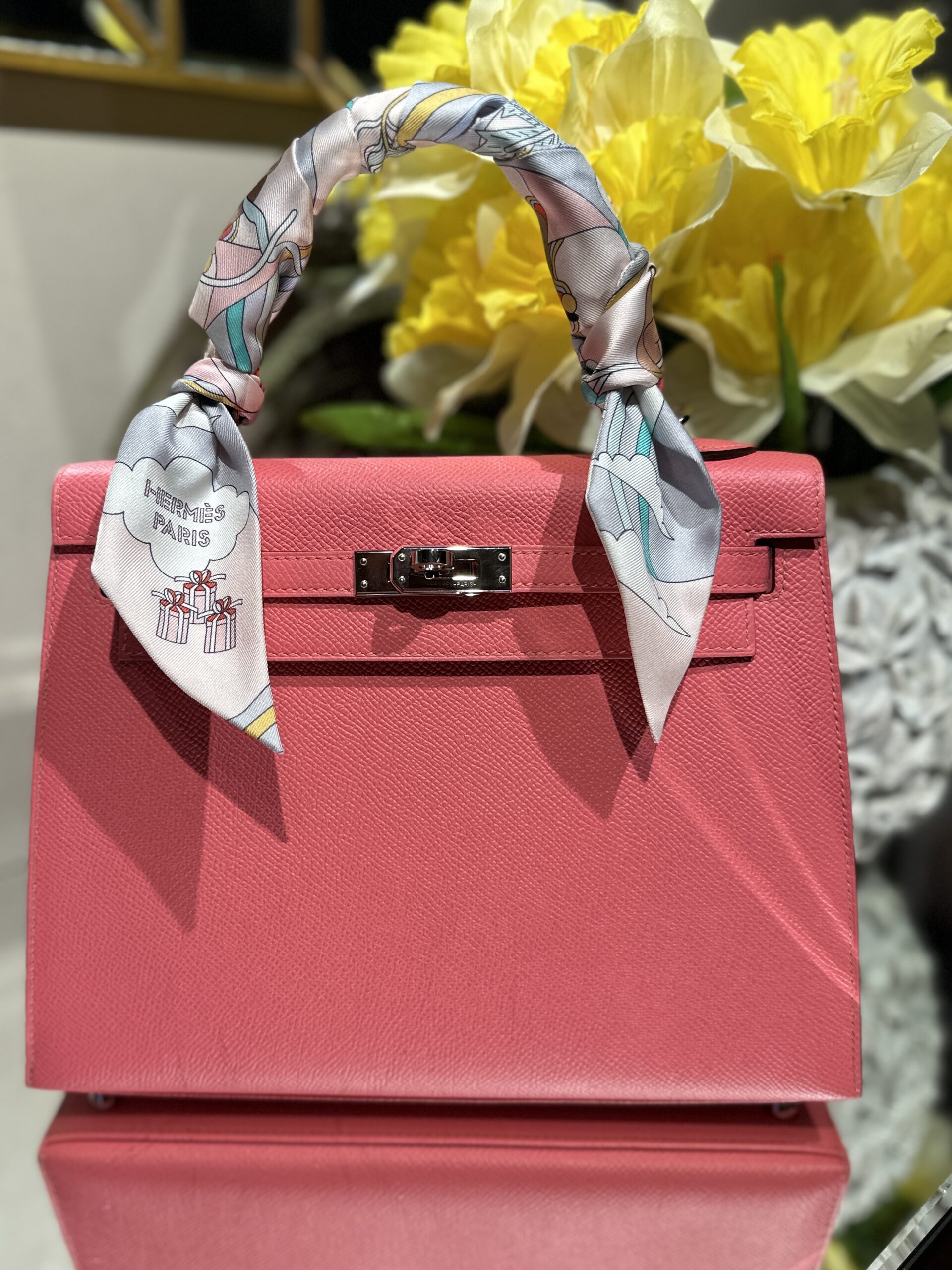

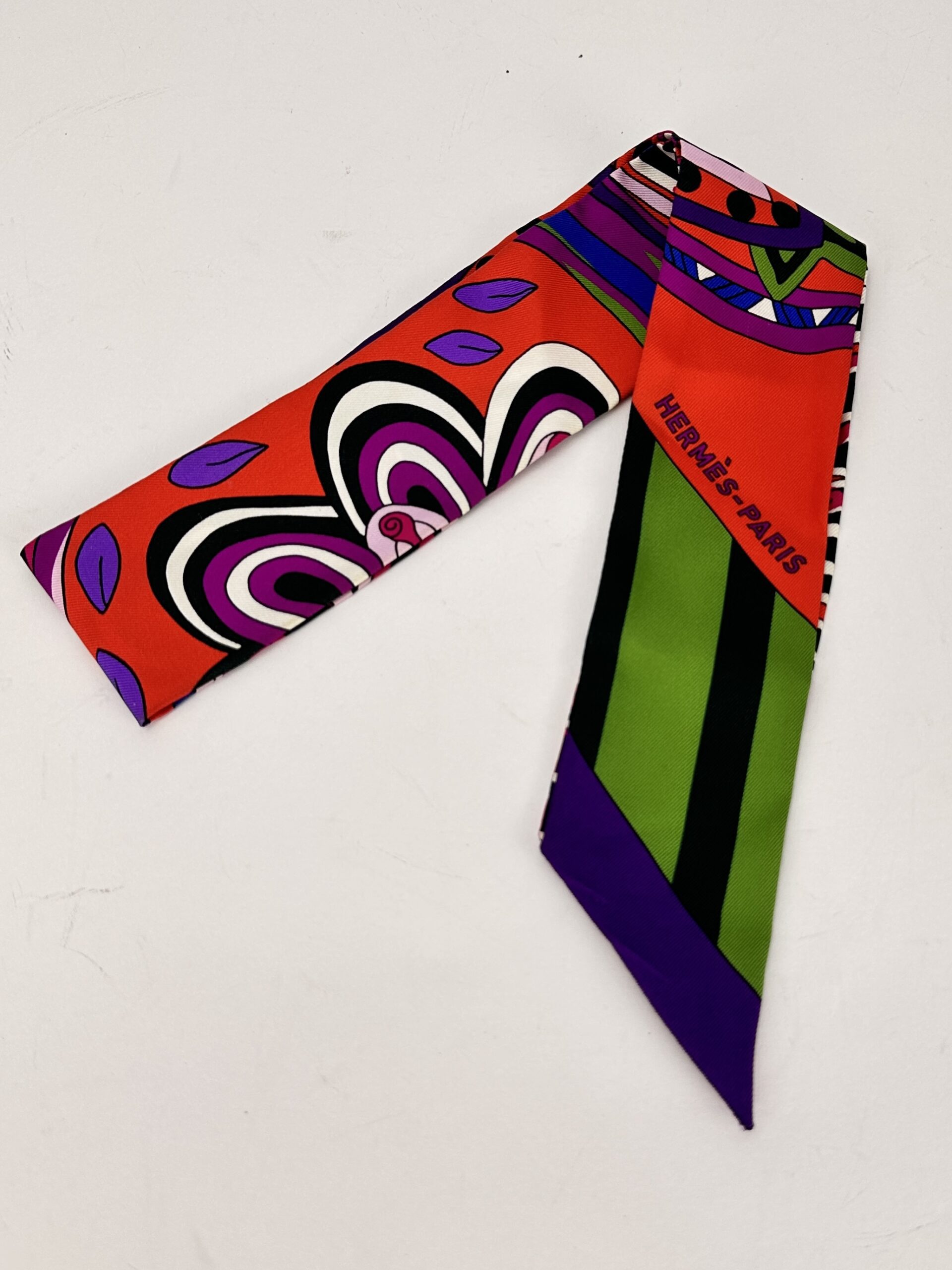
Keep an eye on the shop, we have scarves come in quite regularly, but they never stay for long! You can check out our Hermès collection here.
Love Christine x


 &
& 